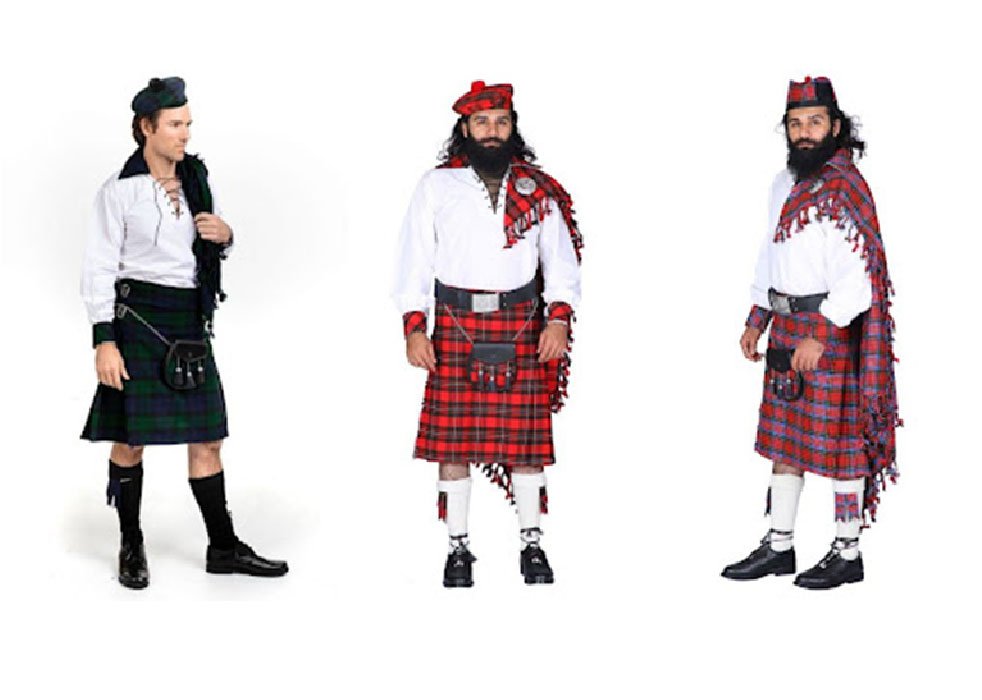Fashion
Exploring Scotland Style: Scottish Hats, Caps, and Tartan Ties

Scotland’s iconic heritage is evident not only in its scenic landscapes and historic castles but also in its distinctive fashion. From the unique pattern of tartan to the traditional headwear, the Scottish style is unmistakable. In this article, we will delve deep into the world of Scottish hats and caps, exploring their history, styles, and their place in modern fashion. We will also look at the revered tartan tie – a key accessory in Scottish fashion that has stood the test of time.
The Timeless Appeal of Scotland Hats and Caps
Scotland hats and caps have long been associated with the country’s rugged landscapes and its proud cultural heritage. From the moment you step into a Scottish highland or urban setting, it’s easy to spot a variety of these stylish accessories. Historically, hats and caps were worn as a practical necessity to protect from the harsh Scottish weather. But over time, they became a symbol of social status and cultural identity. Traditional Scotland hats and caps, like the tam o’ shanter and beret, are still popular today. The tam o’ shanter, named after a character in Robert Burns’ poem, is a woolen bonnet that originated in the Scottish Highlands. Its distinctiveness lies in its slouchy, rounded shape and is often worn with a plaid or tartan scarf. These hats symbolize Scotland’s deep-rooted history and are often seen at highland games, cultural festivals, and other occasions where Scottish pride is on display. The beret has been a key element militarily and has been worn by Scottish regiments for centuries. Today, it continues to embody a sense of Scottish military history and pride.
Scotland Hats and Caps: A Fashion Statement Beyond Tradition
Scottish hats and caps, once associated with tradition, have become key players in modern fashion. From London streets to Paris runways, these accessories are embraced globally. The iconic flat cap, traditionally made of tweed, has been reimagined in materials like corduroy and leather, making it suitable for all seasons. It’s now a staple in men’s fashion for its blend of classic style and practicality. Likewise, the beanie and beret once considered traditional Scottish headwear, have been adapted into contemporary wardrobes. The global revival of these hats highlights how traditional items can evolve, remaining relevant in both casual and high fashion today.
Scotland’s Cultural Significance of Tartan Hats and Caps
Tartan hats and caps are iconic symbols of Scotland’s rich cultural heritage, representing a deep connection to the nation’s history, traditions, and identity. Rooted in Scottish clan culture, tartan patterns once identified individuals’ familial ties, with each clan having its unique design. These garments, often worn during formal events, celebrations, and Highland games, embody pride in Scottish ancestry. Beyond their historical significance, tartan hats and caps have evolved into fashionable statements, blending tradition with contemporary style. They continue to serve as a timeless tribute to Scotland’s vibrant cultural legacy, reflecting the resilience and unity of its people.
Understanding the Tartan Tie
A tartan tie is more than just a fashion accessory—it is a powerful symbol of Scottish heritage. The tie is typically made from wool or silk and features the distinctive criss-cross pattern of tartan. While traditional tartan was handwoven from wool, modern tartan ties are often made from a blend of materials to offer both style and comfort. Despite the changing fabrics, the characteristic checkered design remains the same. Tartan ties come in a wide variety of colors, with each family, clan, and region in Scotland boasting its own unique design. Some of the most famous tartan patterns include the Royal Stewart, Black Watch, and MacGregor. For individuals who trace their ancestry to a particular Scottish clan, wearing a tartan tie associated with that clan is a common tradition. The versatility of a tartan tie allows it to be worn in both casual and formal settings. Whether paired with a classic suit or worn with a kilt for a traditional Scottish event, the tartan tie adds a touch of color and character to any outfit. It is a timeless accessory that continues to resonate with people worldwide who want to embrace a piece of Scottish history.
How to Style Tartan Ties
A tartan tie adds a bold touch of Scottish heritage to both formal and casual outfits. For formal wear, pair it with a tailored suit or tuxedo, opting for subtle patterns like Black Watch for an understated yet sophisticated look. For a casual style, combine it with a smart shirt or polo, and balance the bold pattern with a solid-colored jacket or blazer. Tartan ties are also essential in traditional Scottish dress, perfect for events like ceilidhs or weddings when paired with a kilt. To avoid overwhelming the look, keep the rest of your outfit simple, letting the tie take center stage.
Tartan Ties in Contemporary Fashion
The tartan tie has evolved from being reserved for Scottish events to becoming a fashionable accessory embraced by people of all backgrounds. Its bold pattern and rich history have made it a sought-after piece in various fashion sectors. Designers, like Vivienne Westwood, have reimagined tartan, blending traditional craftsmanship with modern styles. This has led to a wide range of tartan tie options, from bold, oversized checks to more subtle prints. Today, fashion-forward individuals incorporate tartan ties into their everyday wardrobe, pairing them with casual shirts or sweaters for a fun, quirky touch, making it an accessible and stylish way to add Scottish flair.
Conclusion
Scotland hats, caps, and tartan ties are much more than just clothing items; they are symbols of a rich cultural heritage that continues to captivate the world. These timeless pieces reflect Scotland’s history, craftsmanship, and identity, and they remain relevant today, blending traditional elements with contemporary styles. Whether you’re wearing a tartan tie for a special occasion or a flat cap as a daily accessory, you’re not just showcasing your style – you’re connecting with a piece of Scotland’s storied past. Embrace the rich tradition of Scotland’s fashion, and you’ll wear not only a piece of fabric but also a part of history.
For More Information Visit Coopermagazine
-

 Celebrity11 months ago
Celebrity11 months agoWho Is Mallory Plotnik?: The Untold Story of Phil Wickham’s Wife
-

 Celebrity10 months ago
Celebrity10 months agoWho Is Allison Butler?: The Life and Influence of Kirk Herbstreit Wife
-

 Celebrity11 months ago
Celebrity11 months agoMeet Christina Erika Carandini Lee?: All You Need To Know Christopher Lee’s Daughter
-

 Celebrity10 months ago
Celebrity10 months agoWho Is Rebecca Sneed?: All You Need To Know About Lyle Menendez’s Wife
















